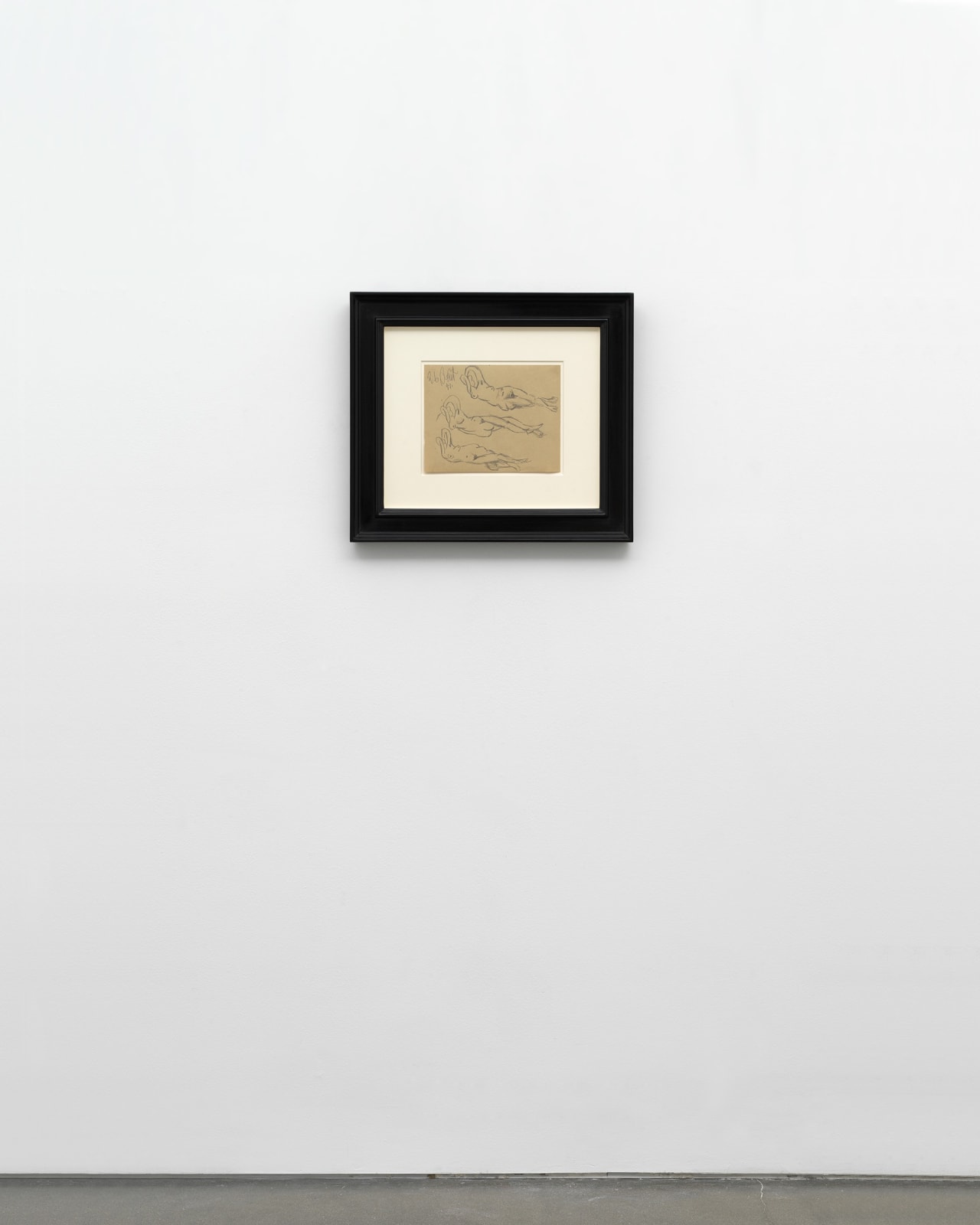Pablo Picasso
Further images
Drawn in the heart of Nazi-occupied Paris in 1941, L’aubade: Études de nus allongés (Dora Maar) is a rare and potent artifact from one of the most psychologically fraught and artistically generative periods of Pablo Picasso’s life. This exquisite sheet, executed in swift, confident graphite on toned paper, is far more than a study of the female form. It encapsulates the formal audacity, emotional complexity, and political sublimation that characterize Picasso’s wartime production, particularly from 1936 to 1945—a decade in which his private turmoil, historical catastrophe, and modernist invention fused with visceral immediacy.
At first glance, the drawing seems to offer a sequential study of a nude figure, most likely Dora Maar, Picasso’s muse and partner during this intense chapter of his life. But the work resists conventional narrative or static anatomy. Instead, the composition moves from a relatively naturalistic rendering at the top to increasing contortion below, as if the body itself is subjected to mounting internal and external pressures. This descent—from form to deformation—is not merely a stylistic device; it is a psychological and political metaphor. The reclining female nude, a motif deeply entrenched in Western art history from Titian to Ingres to Manet, is here co-opted and transformed by Picasso into an expressive register of suffering, fragmentation, and existential dread.
Living as a Spaniard in France during both the Spanish Civil War and the German occupation, Picasso occupied a precarious position—an exile who never returned to Francoist Spain and a noncombatant who nonetheless bore witness to the collapse of European humanism. During this time, Dora Maar remained with him in Paris, and their collaboration, though fraught, was intellectually and emotionally charged. Maar was no passive model; she was a Surrealist photographer and politically engaged intellectual who both supported and challenged Picasso. Her presence in the artist’s work—particularly in Weeping Woman (1937) and studies such as this one—is not merely emblematic of musehood, but an index of shared anguish and reflection.
The title L’aubade—literally, a “dawn serenade”—adds another layer of poetic irony. Traditionally associated with lyrical expressions of morning love, here it feels ominous, almost bitter. The dawn in question is not one of romantic awakening, but of historical catastrophe. These nude forms lie not in repose, but in symbolic exposure—witnesses to a world coming undone. Their progressive distortion might be read as a descent into psychic or collective trauma, a corporeal translation of the violence that could not be depicted directly. As Picasso himself stated in 1944: “I have not painted the war… But I have no doubt that the war is in these paintings I have done.”
Formally, this drawing demonstrates the evolution of Picasso’s approach to the human figure during the war years. While Cubism had taught him how to fracture space, here he seems intent on preserving bodily integrity even as he distorts it. The interlocking lines, the compression of limbs, the skewed torsos—all point toward a mode of seeing that is neither strictly Cubist nor Expressionist, but something more intimate and urgent. Picasso is attempting not to depict the body from multiple perspectives simultaneously, but to reveal it as a site of accumulated emotion and psychic tension.
The drawing also reveals the centrality of draftsmanship to Picasso’s creative practice. Drawing, for him, was not merely preparatory but essential—a medium in which thought and gesture could converge unmediated. Other works from the L’aubade series are held in the Centre Pompidou and the Musée Picasso in Paris, institutions that underscore the canonical weight of these studies. They stand not only as records of process but as autonomous works that bear the full force of Picasso’s wartime vision.
Ultimately, L’aubade: Études de nus allongés (Dora Maar) is a profound meditation on the female form as bearer of cultural and emotional meaning. It is an image not of erotic repose but of psychic exposure, filtered through a lens of loss, resilience, and rebellion. In this drawing, Picasso does not merely engage with the tradition of the nude; he dissects and reconfigures it to meet the exigencies of his time—creating an image as haunting in its formal restraint as it is in its emotional resonance.
Provenance
Estate of the artistMarina Picasso Collection (the artist’s granddaughter; acquired from the above)
Private collection, New York
Literature
Christian Zervos. Pablo Picasso, Œuvres de 1940 et 1941. Paris, 1960, vol. 11, no. 250, illustrated on p. 102.The Picasso Project. Picasso's Paintings, Watercolors, Drawings and Sculpture. Nazi Occupation, 1940-1944. San Francisco, 1999, no. 41-182, illustrated on p. 67.
Christian Zervos. Pablo Picasso, Works from 1940 to 1941. Paris, 2013, vol. 11, no. 250, illustrated on p. 102.






